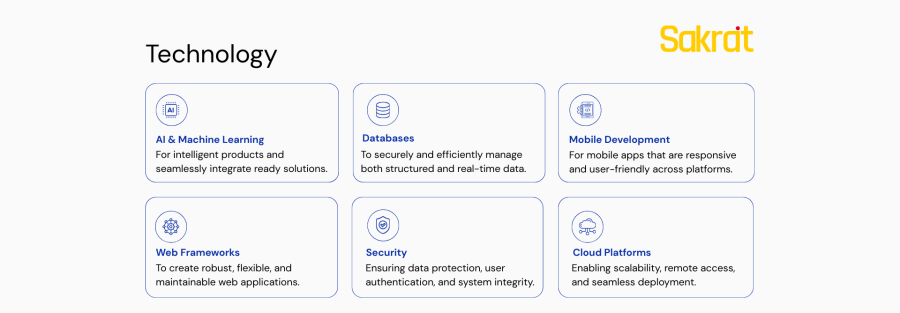7 Top Tech Trends That Will Dominate 2026
As technology evolves at a breakneck pace, the innovations that once seemed like science fiction are rapidly becoming the foundation of our daily lives and business operations. Looking ahead to 2026, we’re moving beyond isolated advancements into a deeply interconnected technological ecosystem.
For business leaders and innovators, simply being aware of these trends isn’t enough. Strategic integration is key to driving growth, efficiency, and a competitive edge. Here are the seven technology trends poised to dominate the landscape in 2026.
1. AI Everywhere: From Assistants to Autonomous Systems
Artificial intelligence is evolving from a reactive tool into a proactive, autonomous workforce. By 2026, AI will be woven directly into the fabric of our operating systems, not just living within apps. Microsoft’s Copilot in Windows and Apple’s on-device Neural Engines are early examples of this shift, where you can ask your desktop to summarize files or generate content without switching tabs.
Beyond personal assistance, this trend is about autonomous systems. In retail, AI will forecast demand and manage supply chains in real time. In healthcare, it will analyze patient data to spot signs of sepsis hours before symptoms appear. The move is from AI as a support tool to AI as the engine of business operations.
2. The Rise of Extended Reality (XR) in Business
Extended Reality (XR), the umbrella term for Augmented Reality (AR), Virtual Reality (VR), and Mixed Reality (MR) is graduating from gaming and entertainment to become a serious business tool. By 2026, lightweight AR glasses will begin to replace screens for everyday tasks like navigation and communication, providing live captions or translated subtitles in your field of view.
In the enterprise world, XR is transforming training, collaboration, and customer engagement. Imagine immersive virtual environments for training complex surgical procedures or AR-powered product demos that allow customers to visualize a product in their own space. Companies like Meta and Apple are investing billions to make these digital avatars and spaces more reactive and intelligent.
3. Advanced Connectivity: The 5G to 6G Transition
While the global 5G rollout continues to enable faster speeds and lower latency, the groundwork for 6G is already being laid for adoption in leading markets by the end of the decade. This next level of connectivity is critical for powering other data-intensive trends.
This hyper-connectivity will be the backbone of truly smart cities, where traffic lights adjust to real-time congestion, and for autonomous vehicles that need to communicate with each other and their environment instantly. The 6G market is projected to grow at a staggering CAGR of nearly 77% from 2030 to 2035, enabling a new era of immersive experiences and interconnected systems.
4. Edge AI and Decentralized Computing
The era of relying solely on the cloud is ending. The massive explosion of data from over 30 billion expected IoT devices by 2026 necessitates processing data closer to where it’s created. This is the core of edge computing. Smart factories will process data on-site to improve efficiency, and smart infrastructure will monitor everything from air quality to traffic flow without constant cloud communication.
This trend is powered by Edge AI, where specialized chips from Apple, Qualcomm, and Intel are being built directly into phones, laptops, and vehicles. This allows for real-time AI tasks like language translation or image recognition to run instantly on your device with enhanced privacy and almost no power drain.
5. Sustainable Tech Becomes a Business Imperative
Sustainability is no longer a corporate responsibility checkbox; it’s a competitive differentiator and a core business imperative. By 2026, companies will face increasing pressure from regulators and consumers to prove their eco-responsibility.
This trend manifests in several ways:
- Green Cloud Computing: Migrating to energy-optimized data centers.
- Carbon-Tracking Software: Implementing tools to measure and manage environmental impact.
- Green Code: A software development trend focused on writing efficient code that consumes less energy.
Companies that lead in sustainable tech will not only meet regulatory standards but also attract environmentally conscious customers and talent.
6. The Surge of Practical, Autonomous Robotics
Robots are breaking out of the factory cage and into our daily lives. This isn’t about remote-controlled machines; it’s about autonomous bots powered by AI vision and real-time mapping.
In logistics, warehouses are using robots to track inventory without human input. In our cities, autonomous bots are already delivering food. And in our homes, smart assistants are evolving from stationary speakers to mobile robots like Amazon’s Astro, which can patrol the home or assist with elder care. As worker shortages persist in key sectors, these intelligent robots are set to become a permanent and expanding part of the workforce.
7. Proactive Cybersecurity by Design
With greater connectivity comes greater risk. The old model of building a digital wall around your assets is obsolete. The dominant trend for 2026 is cybersecurity by design, where security is integrated into every stage of development, not bolted on at the end.
The core of this approach is the Zero-Trust architecture, which operates on the principle of “never trust, always verify.” This, combined with AI-powered threat detection systems that can identify and neutralize threats proactively, is becoming the new standard. In a world of increasing digital risk, building secure systems is not just about protection, it’s about building customer trust and ensuring business continuity.
Are you ready for Top Tech Trends of 2026?
Contact us today to make your vision successful in 2026.


